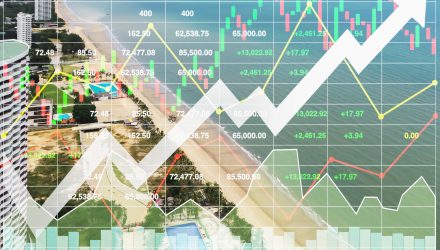In an uncertain market environment where trade wars make the major indexes succumb to wild swings, dividend exchange-traded funds can help provide the aspirin for investor headaches caused by volatility.
Other challenges to dividend yields is a more cautious central bank that is deviating from its rate-hiking measures seen in 2018.
2019 is certainly seeing a more cautious Federal Reserve when juxtaposed with the rate-hiking machine it was in 2018. Rather than trying to pinpoint a sustained inflation target, a more adaptable Fed could certainly be beneficial for the global market and put risk assets back on the proverbial map.
The central bank is certainly revealing this pivot in the latest media sound bytes, but the actual implementation of an above-inflation target will be the moving force for the economy domestically and perhaps globally.
As such, in this current market landscape, what are the best ETFs for dividend yields thus far this year?
Here are some dividend ETFs to consider in today’s trying market environment:
- Invesco S&P 500 High Dividend Low Volatility ETF (NYSEArca: SPHD): The investment seeks to track the investment results (before fees and expenses) of the S&P 500® Low Volatility High Dividend Index (the “underlying index”). The fund generally will invest at least 90% of its total assets in the securities that comprise the underlying index. The index provider compiles, maintains and calculates the underlying index, which is composed of 50 securities in the S&P 500® Index that historically have provided high dividend yields with lower volatility.
- Vanguard High Dividend Yield Index Fund ETF Shares (VYM): seeks to track the performance of a benchmark index that measures the investment return of common stocks of companies that are characterized by high dividend yield. The fund employs an indexing investment approach designed to track the performance of the FTSE High Dividend Yield Index, which consists of common stocks of companies that pay dividends that generally are higher than average. The adviser attempts to replicate the target index by investing all, or substantially all, of its assets in the stocks that make up the index, holding each stock in approximately the same proportion as its weighting in the index.
- iShares Core High Dividend ETF (NYSEArca: HDV): HDV seeks to track the investment results of the Morningstar® Dividend Yield Focus IndexSM composed of relatively high dividend paying U.S. equities. The fund generally will invest at least 90% of its assets in the component securities of the underlying index and may invest up to 10% of its assets in certain futures, options and swap contracts, cash and cash equivalents. The underlying index is comprised of qualified income paying securities that are screened for superior company quality and financial health as determined by Morningstar, Inc.’s (“Morningstar” or the “index provider”) proprietary index methodology.
-
iShares Core Dividend Growth ETF (NYSEArca: DGRO): The investment seeks to track the investment results of the Morningstar® US Dividend Growth IndexSM. The fund generally will invest at least 90% of its assets in the component securities of the underlying index. The underlying index is a subset of the Morningstar® US Market IndexSM, which is a diversified broad market index that represents approximately 97% of the market capitalization of publicly-traded U.S. stocks.
-
O’Shares FTSE U.S. Quality Dividend ETF (OUSA): The investment seeks to track the performance (before fees and expenses) of the FTSE USA Qual/Vol/Yield Factor 5% Capped Index (the “target index”). The target index is designed to reflect the performance of publicly-listed large capitalization and mid-capitalization dividend-paying issuers in the United States exhibiting high quality, low volatility and high dividend yields, as determined by FTSE-Russell (the “index provider”). Under normal market conditions, the fund will invest at least 80% of its total assets in the components of the target index.
For more market trends, visit ETF Trends.

